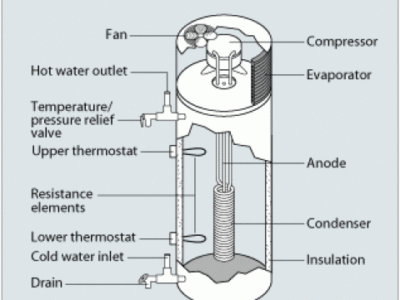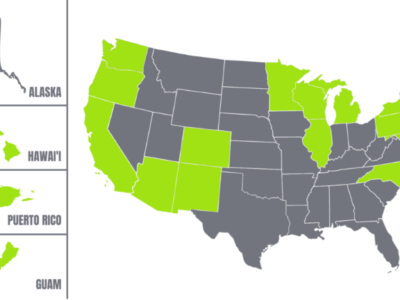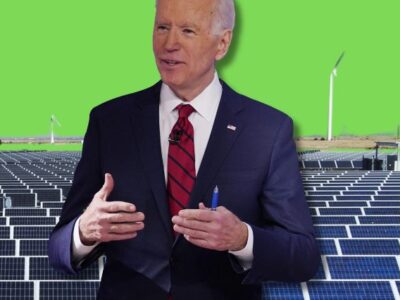Energy
All the President’s Men
The people occupying environment and energy positions will be anti-regulatory and pro-fossil fuel.
There will be a lot of dramatic fireworks on Day One of Trump’s second term, literally and figuratively. Yet his ability to achieve his agenda will depend on the people he’s chosen to run the government. His energy and environment picks will follow the party line of expanding fossil fuels. Yet they may not be as extremist as their predecessors in the first Trump Administration or as some of Trump’s advisors.
CONTINUE READINGWhy I Still ♥ IRA
Biden’s climate law has already had a dramatic impact.
With over a half-trillion dollars in clean tech investment to date, the Inflation Reduction Act has left an indelible mark on U.S. climate policy. It’s unlikely that Congress will vote to repeal the whole law, given massive investments in GOP congressional districts. But even if they did, there’s no undoing the investments already made.
CONTINUE READINGA Trumped-Up Energy Emergency
We have weathered past threats to energy security through democratic processes, not by executive fiat.
The Executive Order has fabricated an energy emergency and is doubly wrongheaded. First, as the statistics bear out, there is neither a domestic energy emergency nor an energy crisis. The U.S. has effectively secured energy independence. More significantly, Trump’s politically driven, fossil fuel-dependent energy portfolio is neither diversified nor economically sound.
CONTINUE READINGThink Globally, Act Locally – Personal Environmental Action in the Era of Trump 2.0
AKA it should be much easier to put in a heat pump water heater.
The chaos of Trump 2.0 is making it difficult to think about affirmative environmental action these days. At the policy level and in the courts, environmentalists are going to be playing defense for the next few years. Much of what is going on these days feels beyond the average person’s control and that can be …
CONTINUE READINGTrump’s Offshore Wind Ban vs. China’s Wind Juggernaut
Why is the Trump administration kneecapping the U.S. offshore wind industry while China becomes a global giant?
This January, when I was in Beijing for a workshop at Tsinghua University on offshore wind, presentation after presentation from Chinese experts revealed just how China has become an absolute juggernaut in offshore wind. Professors from the Chinese Academy of Social Sciences and Tsinghua walked us through the governance structure — state planning, targets, industrial …
Continue reading “Trump’s Offshore Wind Ban vs. China’s Wind Juggernaut”
CONTINUE READINGTariffs and Clean Energy: What You Need to Know
The effect of tariffs on energy markets is complex, and a lot depends on the details.
International trade economics is complicated, and we can’t be certain of how tariffs will work out, particularly in the long term when economies have fully adjusted to them. Trump’s hope is that the tariffs will cause a boom in U.S. production, although there is also evidence that protected industries are less efficient and innovative, resulting in higher consumer prices. Impacts on clean energy could be negative, The same is true for impacts on fossil fuels.
CONTINUE READINGThe Green-State Playbook
Here are five ways states can save climate policy despite Trump.
Trump’s election is a body blow to U.S. climate policy, but there are ways that those states can fight Trump and move forward on their own plans. To cut to the chase, here are five key strategies for green states — starting with lawsuits against the Trump Administration, which were highly successful in Trump’s first term.
CONTINUE READINGTrump’s War Against NEPA
One of Trump’s Executive Orders Heralds a Revolution in NEPA Practice
What’s going on here is pretty obvious, It’s not “improving environmental rules.” No, the title of the subsection is “Unleashing Energy Dominance through Efficient Permitting.” Anything that gets in the way of fossil fuel development – which is what Trump means by energy dominance – is going to get steamrolled. Including the environment.
CONTINUE READINGSurfing the Wave of Executive Orders
As an old song says, “Mama Miá, here we go again!”
One thing that no one can deny is that Trump is brilliant at political theater. People overlook the importance of that at their peril. But theater isn’t reality, and it remains to be seen how many of the grand gestures Trump made today will eventuate in law.Presidents love issuing executive orders. It’s easy to do, and many people will credit the president with major accomplishment. But really, as someone recently said, an executive order is “just a memo on fancy letterhead.”
CONTINUE READINGJoe Biden, Hail and Farewell
His climate actions will resonate far into the future.
Joe Biden is about to vanish from the political scene, but not from the history books. The last election casts a pall on his reputation, as does his unpopularity. But history may be kinder, as it has been for Harry Truman and Jimmy Carter. Beyond all else, he has been our best president yet on climate policy. For our descendants, that will matter a lot more than a couple of years of inflation that impacted their ancestors.
CONTINUE READING












